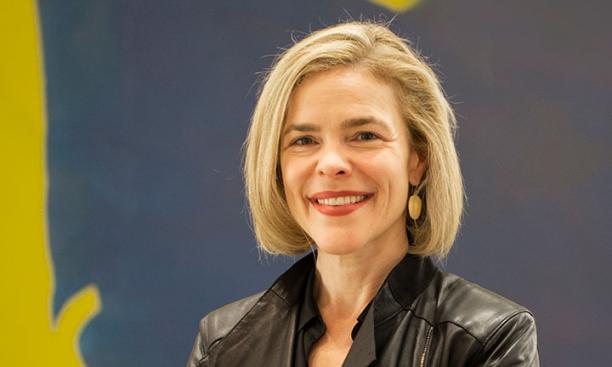
While President Donald Trump was signing an executive order temporarily banning the entry of refugees into the United States, Alison Weaver ’93, founding executive director of the new Moody Center for the Arts at Rice University, was laying the groundwork for an artistic workshop she hopes will spark a public dialogue about refugee assimilation and integration.
Renowned Danish-Icelandic artist Olafur Eliasson’s Green Light — An Artistic Workshop, will be one of the first installations featured at the new 50,000-square-foot Moody Center, designed by Michael Maltzan Architecture of Los Angeles, which opens Feb. 24. The project will bring together a group of recently-arrived refugees and asylum seekers with Rice students and the public to build an artwork designed by Eliasson, concurrent with a series of public dialogues about the global refugee crisis. The stackable, modular green lamps designed by Eliasson symbolize a “green light” to refugees and other immigrants by inviting them to participate in “shared learning,” which will include language courses, seminars and film screenings.
Weaver, who was hired to direct the Moody Center in July 2015, describes the Center as “a program, not just a building.” And that program is not only about the arts, but about fostering “interdisciplinary collaboration through the arts,” Weaver says. One upcoming class is “Conceiving the Monstrous in Fiction and Bioscience,” to be co-taught by a bioscientist and romance language instructor. “Students will learn about genetic mutations but also read literature, such as Kafka’s Metamorphosis, and [the course] culminates in students making their own monster,” Weaver explains.
In addition to classrooms, the Moody Center features several art galleries, a theater, a maker space, a “tech-issue library” where advanced equipment can be checked out, a café, and offices for visiting artists and scholars.
Art became a passion for Weaver, a history of religion major, beginning with her first art history class at Princeton, Professor Robert Bagley’s early Chinese art course.
“It basically inspired in me the idea that experiencing a work of art can really be transformative,” says Weaver. The students handled early Chinese art at the campus art museum and on field trips, which she says launched her lifelong trajectory.
Weaver pursued a master’s in business administration at Yale, but found “I was always sneaking over to the art department (and taking art history courses) because that was my fun thing.” She also worked as a curatorial intern at the Yale University Art Gallery and spent the summer working at the Museum of Modern Art (MOMA) in New York City. All that led her to pursue a master’s degree in the history of art at Williams College.
After completing the two graduate degrees, Weaver began to integrate her background in business administration with the arts. She joined the staff of the Solomon R. Guggenheim Museum in 2004, where, as director of affiliates, she led its programs and operations in Berlin, Bilbao, Venice, and Las Vegas while managing the departments of exhibition management, registration, art services, and library/archives in New York.
Weaver sees her position at the Moody Center as an opportunity to pioneer something cutting edge. “What we’re doing at the Moody is very new and has the potential to have a high impact on the campus and community and be a model for other schools,” Weaver says. She adds that it’s part of “an interesting phenomenon happening at several universities looking at ways in which art can be broadly relevant across the student body. “
The Lewis Center for the Arts at Princeton, the List Visual Arts Center at MIT, and the Granoff Center for the Arts at Brown University are all part of this phenomenon, according to Weaver. “I view the Moody as part of this broader effort to celebrate and elevate the arts on a variety of college campuses,” she says.
For more about the Moody Center’s inaugural program, visit moody.rice.edu.
